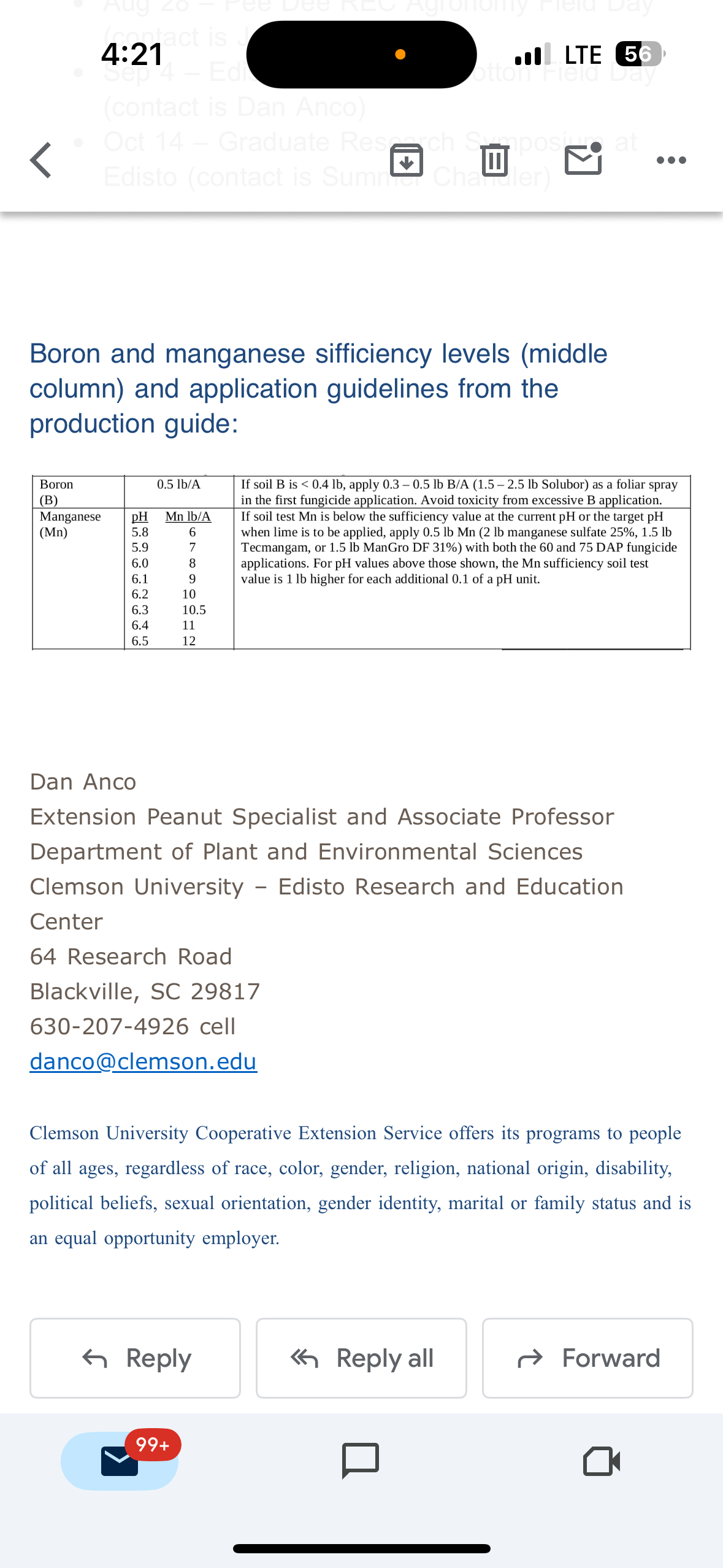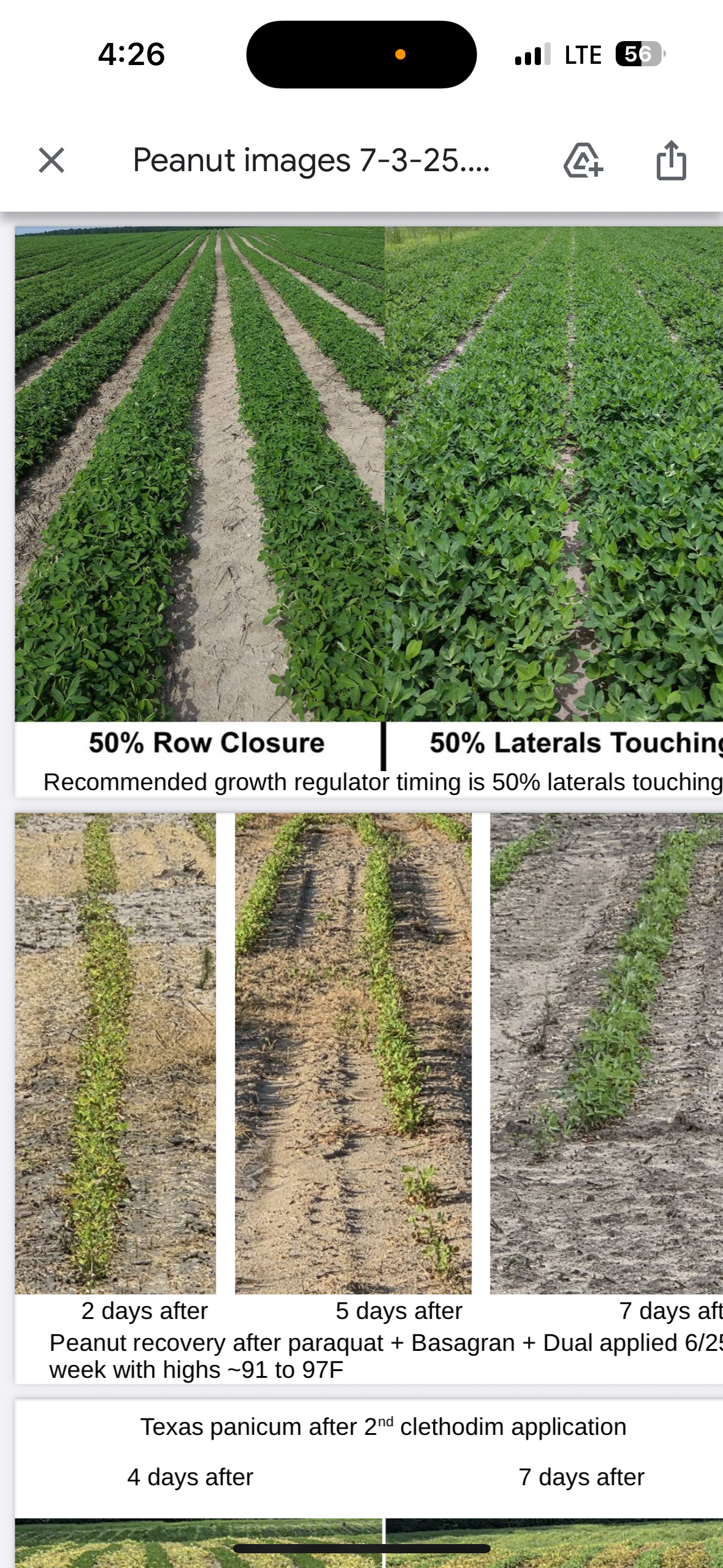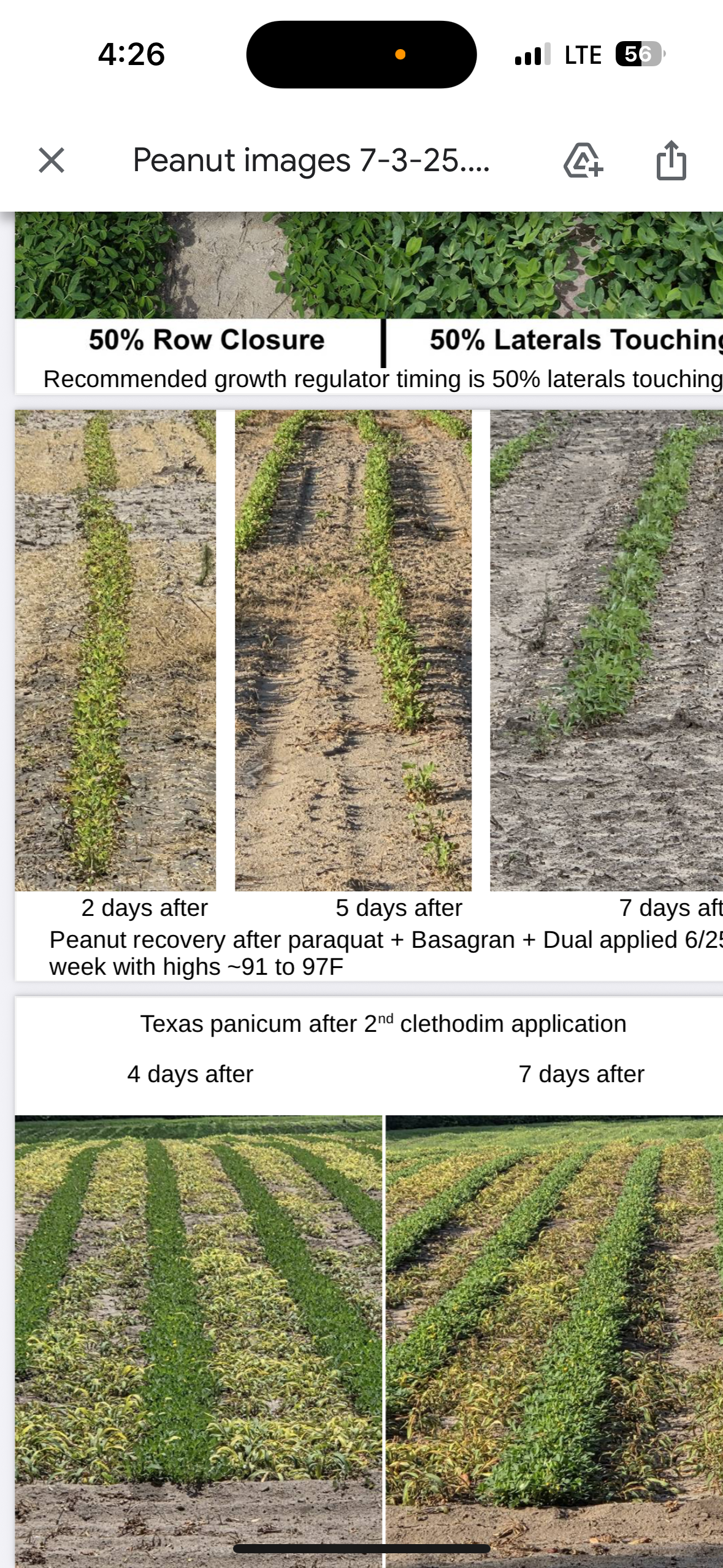Dan Anco Clemson Comments Peanut Notes No. 143 2025
go.ncsu.edu/readext?1080871
en Español / em Português
El inglés es el idioma de control de esta página. En la medida en que haya algún conflicto entre la traducción al inglés y la traducción, el inglés prevalece.
Al hacer clic en el enlace de traducción se activa un servicio de traducción gratuito para convertir la página al español. Al igual que con cualquier traducción por Internet, la conversión no es sensible al contexto y puede que no traduzca el texto en su significado original. NC State Extension no garantiza la exactitud del texto traducido. Por favor, tenga en cuenta que algunas aplicaciones y/o servicios pueden no funcionar como se espera cuando se traducen.
Português
Inglês é o idioma de controle desta página. Na medida que haja algum conflito entre o texto original em Inglês e a tradução, o Inglês prevalece.
Ao clicar no link de tradução, um serviço gratuito de tradução será ativado para converter a página para o Português. Como em qualquer tradução pela internet, a conversão não é sensivel ao contexto e pode não ocorrer a tradução para o significado orginal. O serviço de Extensão da Carolina do Norte (NC State Extension) não garante a exatidão do texto traduzido. Por favor, observe que algumas funções ou serviços podem não funcionar como esperado após a tradução.
English
English is the controlling language of this page. To the extent there is any conflict between the English text and the translation, English controls.
Clicking on the translation link activates a free translation service to convert the page to Spanish. As with any Internet translation, the conversion is not context-sensitive and may not translate the text to its original meaning. NC State Extension does not guarantee the accuracy of the translated text. Please note that some applications and/or services may not function as expected when translated.
Collapse ▲The following are recent comments from Dan Anco at Clemson.
Growth Regulator Timing
Runner Gypsum
Benefit to N Application?
A couple questions came up about applying N fertilizer to peanut. When a field has been effectively inoculated at planting and is not showing signs of N deficiency, I do not have data, nor have seen data, to support an economic benefit to the application of additional N fertilizer.
Upcoming Field Days in 2025
-
-
July 10 – Edisto REC Watermelon Field Day (contact is Bhupinder Jatana)
-
July 15-16 – Pee Dee Tobacco Field Day (contact is William Hardee)
-
July 22 – Pee Dee REC Corn/Soybean Field Day (contact is Michael Plumblee)
-
July 24 – Edisto REC Corn/Soybean Field Day (contact is Michael Plumblee)
-
July 25 – Baruch Behind the Gate event (contact is Jim Anderson)
-
Aug 28 – Pee Dee REC Agronomy Field Day (contact is Jane Dever)
-
Sep 4 – Edisto REC Peanut/Cotton Field Day (contact is Dan Anco)
-
| Boron (B) | 0.5 lb/A | If soil B is < 0.4 lb, apply 0.3 – 0.5 lb B/A (1.5 – 2.5 lb Solubor) as a foliar spray in the first fungicide application. Avoid toxicity from excessive B application. |
|---|---|---|
| Manganese (Mn) | pH | Mn lb/A |
| 5.8 | 6 | |
| 5.9 | 7 | |
| 6.0 | 8 | |
| 6.1 | 9 | |
| 6.2 | 10 | |
| 6.3 | 10.5 | |
| 6.4 | 11 | |
| 6.5 | 12 | |
| If soil test Mn is below the sufficiency value at the current pH or the target pH when lime is to be applied, apply 0.5 lb Mn (2 lb manganese sulfate 25%, 1.5 lb Tecmangam, or 1.5 lb ManGro DF 31%) with both the 60 and 75 DAP fungicide applications. For pH values above those shown, the Mn sufficiency soil test value is 1 lb higher for each additional 0.1 of a pH unit. | ||
Extension Peanut Specialist and Associate Professor





